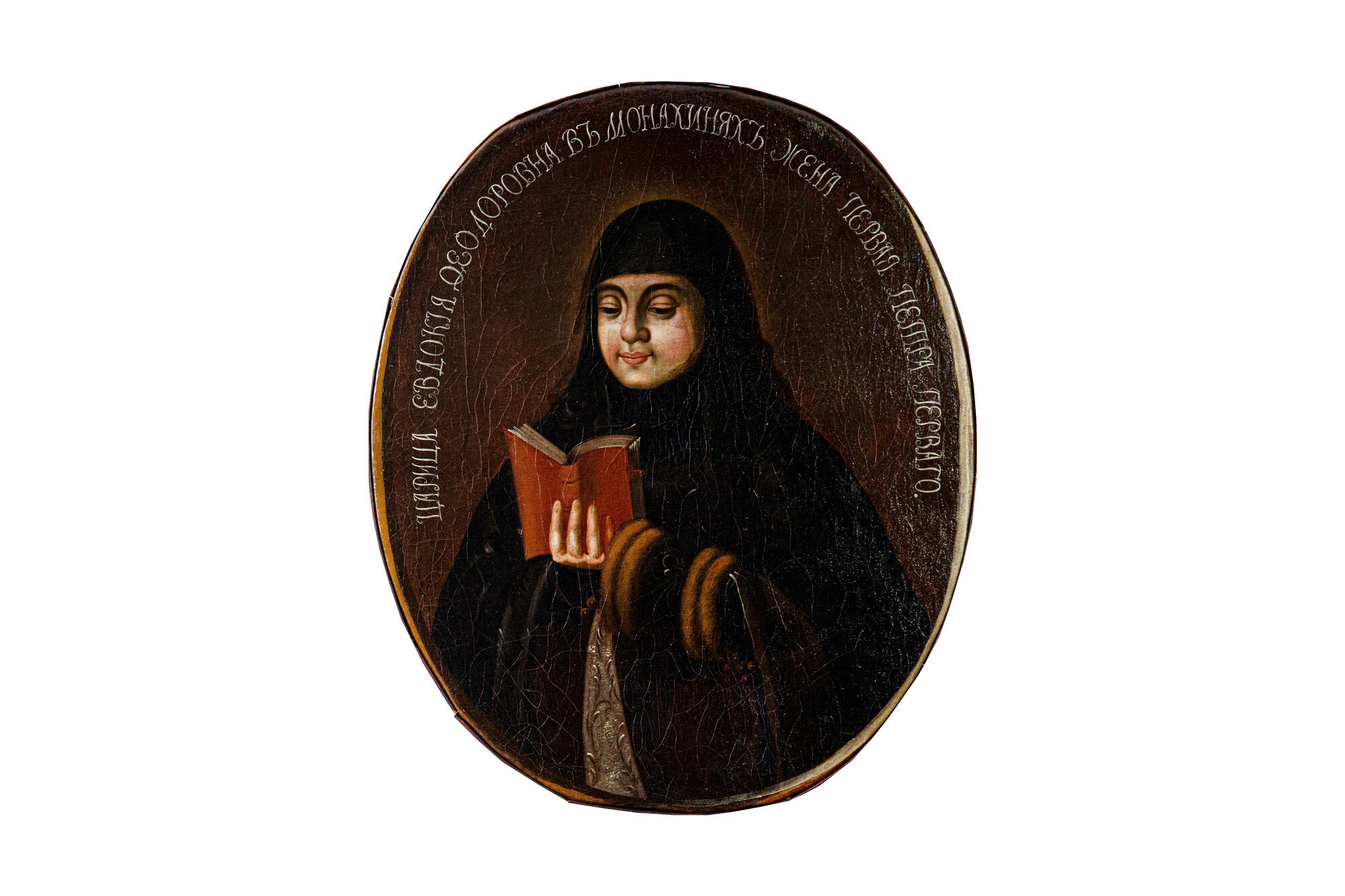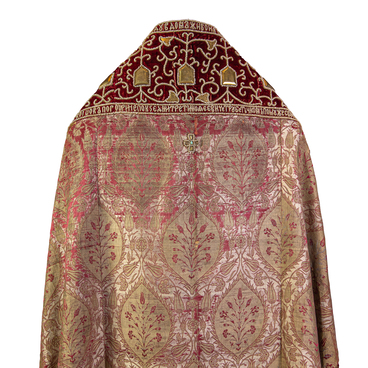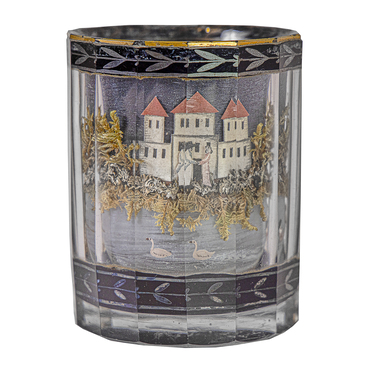The portrait of Tsarina Evdokia Lopukhina as a meekly smiling nun reading a book was created by an unknown artist, most likely an icon painter. Art historians believe that this canvas can be attributed to the “parsuna” in style and brushwork. Parsuna is a transitional genre between an icon and a secular portrait. The word is a derivation from the Latin “persona” — that’s what the portrait was called in the 17th century.
Among the characteristic features of the genre on this canvas are the iconographic manner of painting (this is especially noticeable in depicting facial features) and the inscription in the background. The original portrait was painted in the Suzdal Pokrovsky Monastery, where Evdokia Lopukhina was tonsured a nun. The exhibition presents a copy of the portrait, it is somewhat inferior to the original in detail. A finely crafted veil is barely discernible, partially covering the face of the Tsarina Evdokia; other elements of clothing are not outlined. In the middle of the 19th century, in the hall of the Metropolitan Chambers, the portrait of Evdokia Lopukhina was located next to the portrait of her son, Tsarevich Alexei.
Evdokia Lopukhina is the tsarina, the first wife of Peter I, daughter of Kaluga boyar Fedor Lopukhin. The marriage was arranged by Naryshkina, Peter’s mother without her son’s consent. She was attracted by the fact that the Lopukhin family, although not very noble, was numerous and would be able to support the young Tsar.
Brought up in the spirit of old times, the superstitious young tsarina did not share the views of her energetic and full of new ideas husband. Evdokia bore Peter three sons, two of whom died in infancy. The fate of the eldest son Alexei was also tragic. Later, in 1718, he was convicted of high treason and sentenced to death. However, the tsarevich died before the execution of the sentence, presumably from a heart attack.
In 1698, by order of her husband, the Tsar, Evdokia was sent to the Suzdal Pokrovsky Monastery and was admitted to the veil under the name of Elena. However, six months later, Evdokia Lopukhina took off her monastic vestments and began to live at the monastery as a laywoman.
The fate of the former tsarina changed almost ten years later, when her grandson Peter II, Tsarevich Alexei’s son, succeeded to the throne. Evdokia returned to Moscow. She was housed in the Kremlin in the spacious chambers of the Ascension Monastery, treated like a true tsarina. In 1730, her grandson died unexpectedly. Evdokia moved to the chambers of the the Novodevichy Convent, where she died and was buried in the Smolensk Cathedral.
Among the characteristic features of the genre on this canvas are the iconographic manner of painting (this is especially noticeable in depicting facial features) and the inscription in the background. The original portrait was painted in the Suzdal Pokrovsky Monastery, where Evdokia Lopukhina was tonsured a nun. The exhibition presents a copy of the portrait, it is somewhat inferior to the original in detail. A finely crafted veil is barely discernible, partially covering the face of the Tsarina Evdokia; other elements of clothing are not outlined. In the middle of the 19th century, in the hall of the Metropolitan Chambers, the portrait of Evdokia Lopukhina was located next to the portrait of her son, Tsarevich Alexei.
Evdokia Lopukhina is the tsarina, the first wife of Peter I, daughter of Kaluga boyar Fedor Lopukhin. The marriage was arranged by Naryshkina, Peter’s mother without her son’s consent. She was attracted by the fact that the Lopukhin family, although not very noble, was numerous and would be able to support the young Tsar.
Brought up in the spirit of old times, the superstitious young tsarina did not share the views of her energetic and full of new ideas husband. Evdokia bore Peter three sons, two of whom died in infancy. The fate of the eldest son Alexei was also tragic. Later, in 1718, he was convicted of high treason and sentenced to death. However, the tsarevich died before the execution of the sentence, presumably from a heart attack.
In 1698, by order of her husband, the Tsar, Evdokia was sent to the Suzdal Pokrovsky Monastery and was admitted to the veil under the name of Elena. However, six months later, Evdokia Lopukhina took off her monastic vestments and began to live at the monastery as a laywoman.
The fate of the former tsarina changed almost ten years later, when her grandson Peter II, Tsarevich Alexei’s son, succeeded to the throne. Evdokia returned to Moscow. She was housed in the Kremlin in the spacious chambers of the Ascension Monastery, treated like a true tsarina. In 1730, her grandson died unexpectedly. Evdokia moved to the chambers of the the Novodevichy Convent, where she died and was buried in the Smolensk Cathedral.



